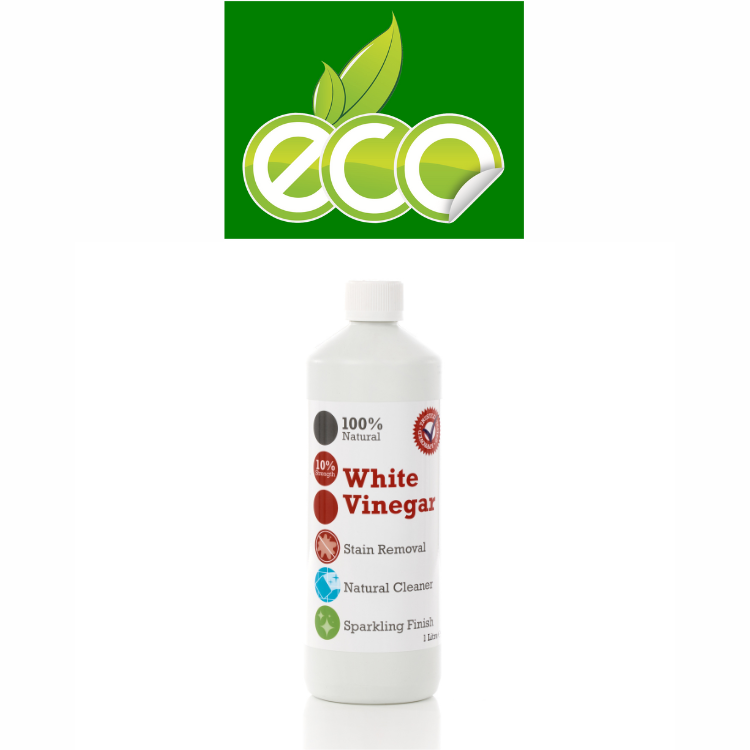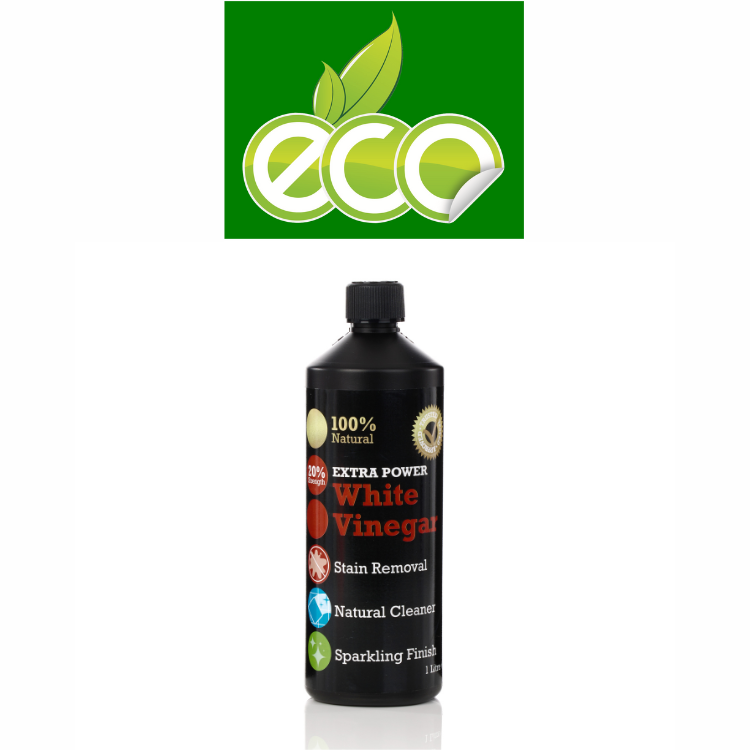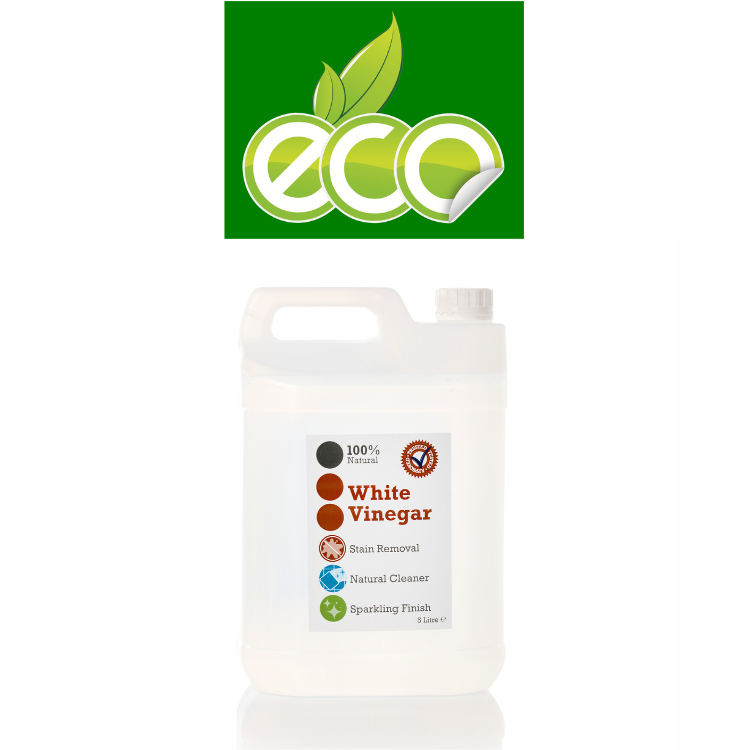Monday 13th June 2022



RINSE-AID
By simply pouring vinegar into your rinse-aid dispenser, this helps glass and cutlery stay smear and streak free in the dishwasher and prevent glassware becoming cloudy.
CLEAN WINDOWS & GLASS
Give windows, mirrors and shower screens a streak-free shine by spraying on white vinegar and wiping off with a clean, lint-free cloth.
DESCALE SMALL APPLIANCES
Remove limescale from your kettle, coffee machine and iron. Spray onto the unsightly limescale surface, wait for 10 minutes and rinse clean. Using hot water will help to dissolve the limescale. To clean your iron; empty the water reservoir and fill a third full with vinegar. Use the steam setting and iron an old cloth until all the vinegar has been used. Switch off and leave to cool. Repeat the process with clean water to flush out any remaining vinegar. Make sure you empty the reservoir of water every time you finish with the iron to reduce future deposits forming. Also do not leave water sitting in the bottom of your kettle when not in use and use filtered water if you can – this will help reduce build up when using these appliances daily.
RUST REMOVAL
Left your handy pliers or garden cutters outside to rust? Soak them in some vinegar to make them rust free.
KITCHEN SINKS
Kitchen sinks and draining boards often look dull due to water
droplets that leave limescale deposits. White vinegar can solve this and is
great for brightening up the kitchen sink and draining board. Simply spray onto
a clean cloth or sponge and wipe over.
INSIDE THE MICROWAVE
INSIDE THE MICROWAVE
It’s annoying when you hear that ‘pop’ from inside the
microwave and you just know your food has exploded everywhere! Don’t fear! Putting
vinegar in a heatproof bowl, adding water and heating for 30 seconds will make
all your microwave explosions become unstuck, so you can wipe them off with
ease.
LAUNDRY SOFTENER
Run out of your favourite fabric softener? Not to worry! Just add 40ml of white vinegar to your dispenser. It will leave laundry beautifully soft and don’t worry, there won't be a vinegary smell!
REMOVE FABRIC STAINS
LAUNDRY SOFTENER
Run out of your favourite fabric softener? Not to worry! Just add 40ml of white vinegar to your dispenser. It will leave laundry beautifully soft and don’t worry, there won't be a vinegary smell!
REMOVE FABRIC STAINS
Spray onto colour-safe fabrics and upholstery, then wipe
over with a clean, damp cloth. It's also great as a pre-wash stain treatment
for shirt and blouse cuffs and collars, and underarm deodorant marks.
TACKLE DULL TAPS AND SHOWER HEADS
White vinegar works even more effectively at removing limescale when it's hot and given time to work its magic. Submerge in a plastic bag or use a balloon of warm vinegar secured by an elastic band. Leave for at least an hour before rinsing.
SOFTEN SCRATCHY TOWELS
Often people think to add more fabric softener to their towel wash – because that’s what it says right?! But actually, laundry detergent and fabric conditioner build-up can make towels stiff. Soak them in 200g soda crystals and 500ml hot water for an hour, before washing them as normal substituting white vinegar for the fabric conditioner. If possible, tumble dry. Repeat this method if needed until the towels are restored to their former softness.
SOOTHES BITES
Beat the itching and soothe your sting by dabbing cotton wool in vinegar and putting it on your bite. It’ll clean it too.
REMOVING DOODLES IS A DODDLE
Got a budding artist in your home, who’s decided the hallway is their canvas? You can remove ball point pen marks by dabbing a little bit of vinegar over it until it disappears.
REMOVE WALLPAPER
Taking down old wallpaper can be a daunting task. Make it a bit easier and mix water with vinegar (an equal 1:1 ratio) in a spray bottle and spray it on wallpaper before you remove it.
KEEP FLOWERS FRESHER FOR LONGER
Keep your flowers fresh by adding a little vinegar and 2 tbsp of sugar to the water in the vase.
TACKLE DULL TAPS AND SHOWER HEADS
White vinegar works even more effectively at removing limescale when it's hot and given time to work its magic. Submerge in a plastic bag or use a balloon of warm vinegar secured by an elastic band. Leave for at least an hour before rinsing.
SOFTEN SCRATCHY TOWELS
Often people think to add more fabric softener to their towel wash – because that’s what it says right?! But actually, laundry detergent and fabric conditioner build-up can make towels stiff. Soak them in 200g soda crystals and 500ml hot water for an hour, before washing them as normal substituting white vinegar for the fabric conditioner. If possible, tumble dry. Repeat this method if needed until the towels are restored to their former softness.
SOOTHES BITES
Beat the itching and soothe your sting by dabbing cotton wool in vinegar and putting it on your bite. It’ll clean it too.
REMOVING DOODLES IS A DODDLE
Got a budding artist in your home, who’s decided the hallway is their canvas? You can remove ball point pen marks by dabbing a little bit of vinegar over it until it disappears.
REMOVE WALLPAPER
Taking down old wallpaper can be a daunting task. Make it a bit easier and mix water with vinegar (an equal 1:1 ratio) in a spray bottle and spray it on wallpaper before you remove it.
KEEP FLOWERS FRESHER FOR LONGER
Keep your flowers fresh by adding a little vinegar and 2 tbsp of sugar to the water in the vase.
Although we can all agree white vinegar is a fantastic all
round cleaner and should be a staple of every cleaning cupboard, there are a
few surfaces you should avoid using white vinegar on. Always check on an inconspicuous
area and check your appliances / clothes labels for guidance.
- Frosted glass – it removes the etching
- Limestone, natural stone or marble worktops
- Metal plated surfaces where the plating is already peeling







